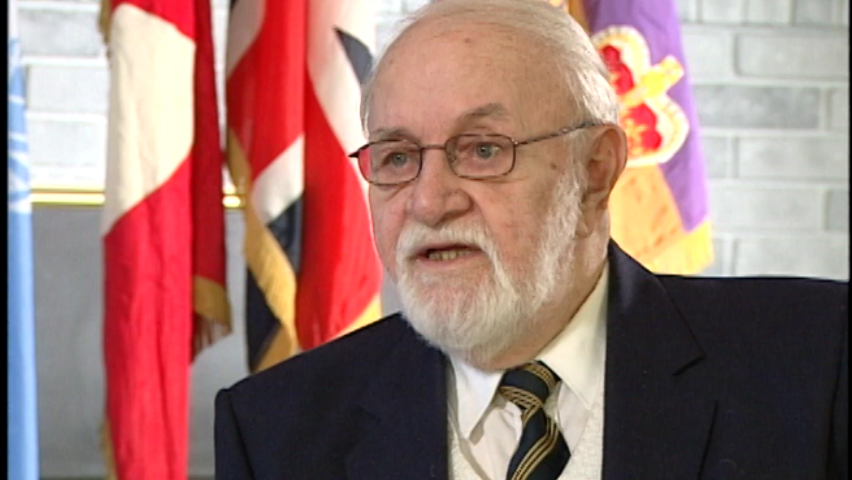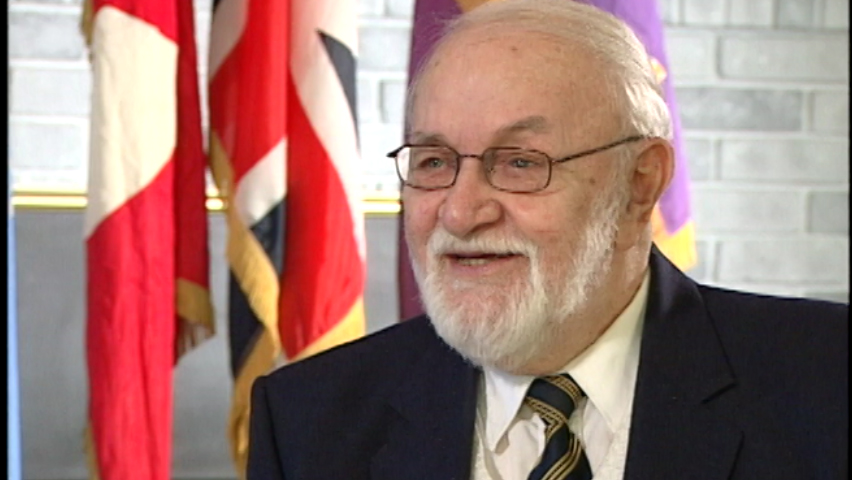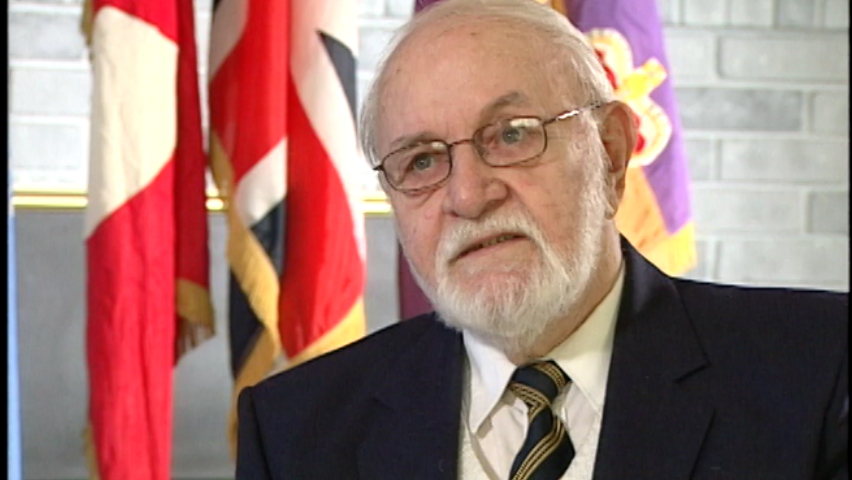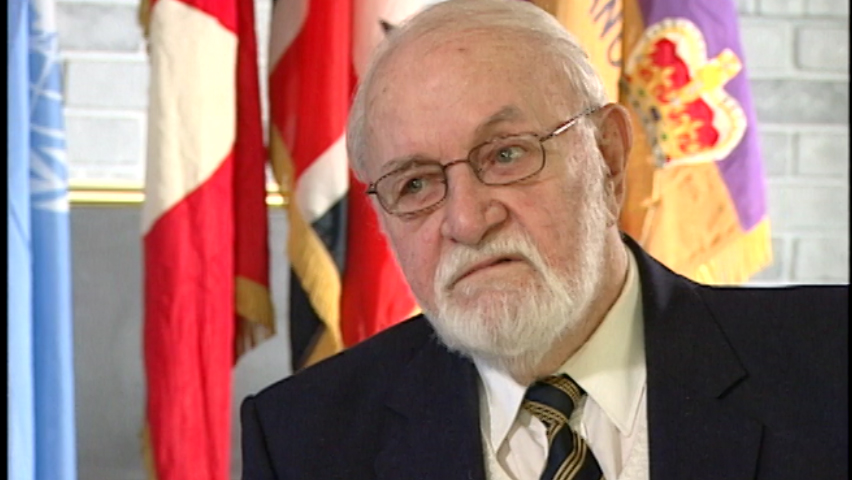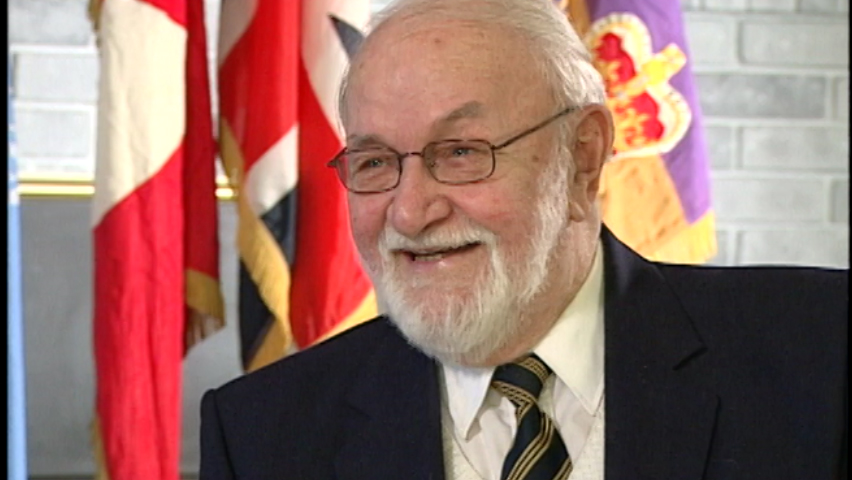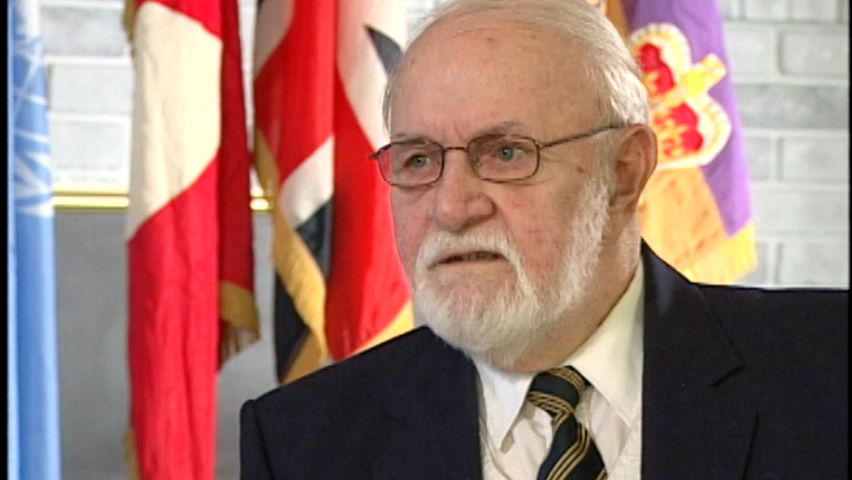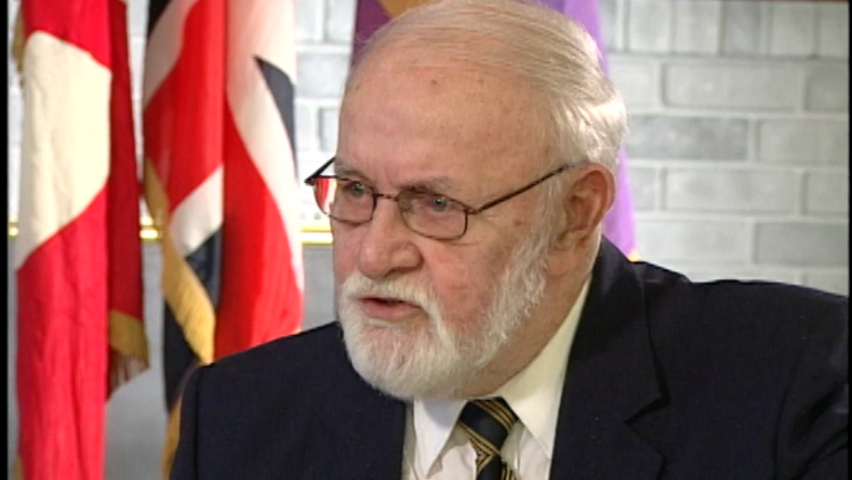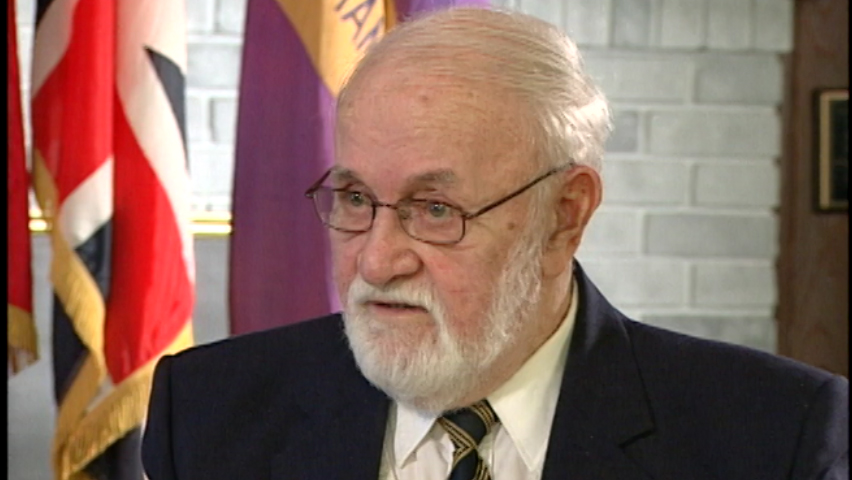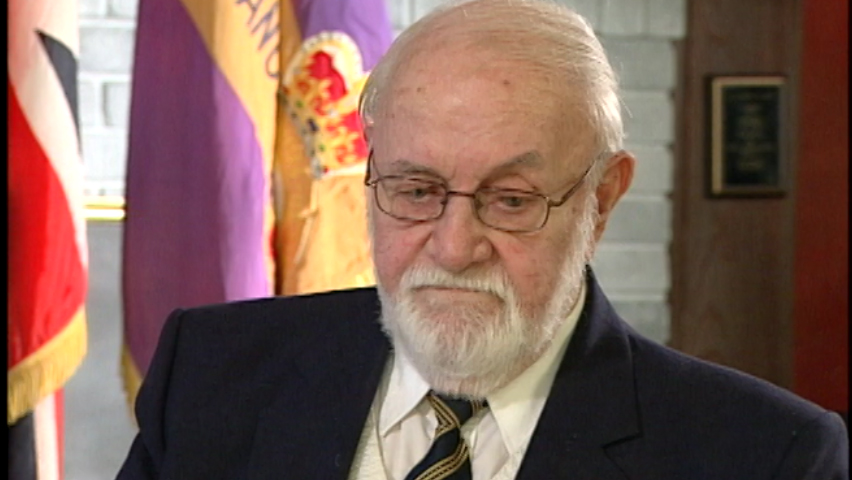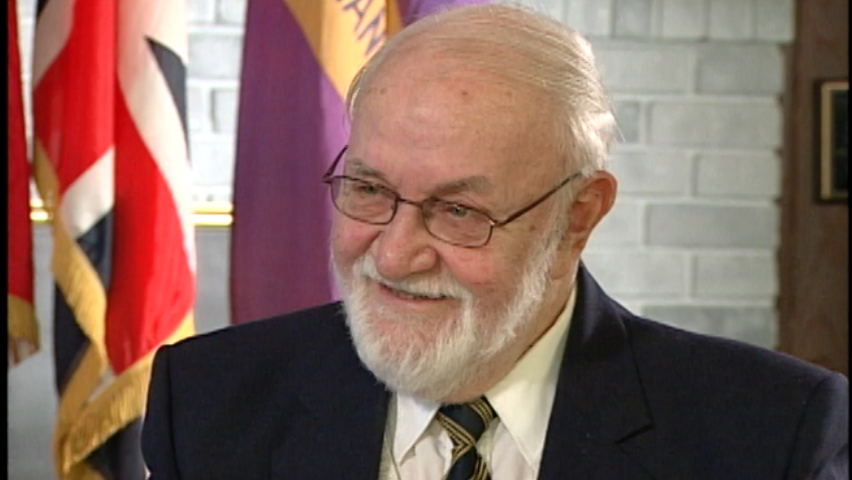One Gun Range for All
Heroes Remember
One Gun Range for All
There were two troops to a battery, four guns per troop, and
then there, but there were three batteries, we had twenty-four
guns all together in the regiment. The other batteries could be
miles and miles away, never get to know those fellows, you only
got to know the fellows that were in your own battery, you know.
Guns were strange, you know, cause I still don't understand it.
But we could take up a position, there were eight guns in our
battery, there were eight more in another battery probably a
mile away and there were eight more into another battery. And
the way they were, they were, set up, there were, there were
fellas that specialized in that. We could range one gun, fire
and the shot would come down if you were out at the observation
post, "Okay, it's a little too far, less 200, 200 yards less" or
something eh. "Right, half a degree" or something. "Ok your on".
Three rounds of regimental fire and every gun would go down that
target. There was one gun ranging. It's amazing you know.
It's good stuff.
Interviewer: One of the issues that the infantry guys have told,
not only myself but others and I certainly remember one, is that
friendly fire, it must have always been a big fear of the
artillery guys, is hitting your own guys up front? (Yeah). Did
that thought ever... I know you were saying that you just
... did you ever...
No, but see, you'd, no they had it down pretty fine. They had
fellas specially trained for that and they could take a map
reference. Maps with all them little squares, eh. Take a map
reference and just range one gun, like I was telling you, on
that target. Now if that were behind you, behind the observation
post, well, let's get her up a bit eh.... and so on. And then
the other guns, however they're surveyed in, they're all
following that order from the gun that's ranging and when they
get to battery fire or regimental fire they're all on the same
target. Good stuff you know. Yep.
Interviewer: So really it's your sense that friendly fire
wasn't... You always had to be careful of.
Yes, absolutely. Absolutely. Fellows out there, they'd know
where the first shell landed and you weren't just firing at
random, you know. No, no. Every shot was accounted for
and told to fire, you know. Yup.
Related Videos
- Date modified:



